Vinews
No. 8 — May 13, 2019
Contents:
- Be Alert for Herbicide Drift
- Prepare for Their Return: Japanese Beetles
- Weather Forecast — Heavy Rains Predicted
- Pestalotiopsis
- Phomopsis viticola on Chambourcin on 17 May 2019, Boone
- Cumulative Growing Degree Days for the Seven Grape Growing Regions of Missouri from April 1 to May 13, 2019
Be Alert for Herbicide Drift
With this window of dry weather this week a lot of corn likely will be planted prior to the weekend rains. As of May 12, only 52 percent of the corn has been planted compared to the five-year average (2014-2018) of 87 percent. I suspect that a lot of the corn being planted is no-till which will result in a lot of burndown herbicides being applied in the next 5 to 10 days. There is anecdotal evidence that corn likely will be planted for some period of time since soybean seed is in very short supply.
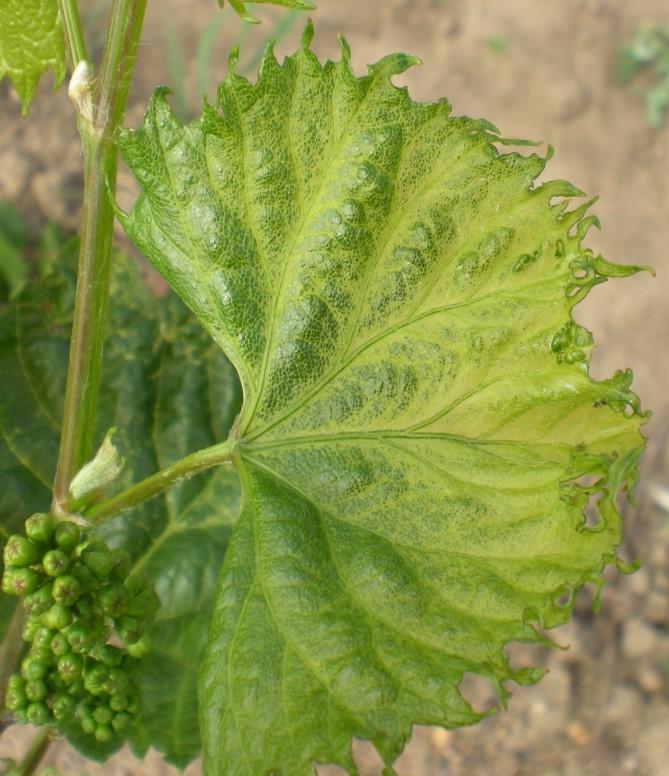
As the latter part of the month of May nears many row crop farmers make the switch from planting corn to planting soybeans. With short seed supplies of soybeans this year, many farmers likely will not be able to make the switch from corn to soybeans. I suspect there will be a lot of no-till corn planted into some very weedy fields and this will be followed by a barrage of burndown herbicides. What does this mean for grape growers?
Herbicide drift should be a real concern especially since the grapevines are at a stage of development in which phenoxy herbicides can be very detrimental to grape production. Many grape cultivars will be at or nearing the beginning of flowering in the next week. At this stage of development the grapevine inflorescence/flowers are the most sensitive to synthetic auxins (Bezoic acids, phenoxycarboxylic acids, pyridine carboxylic acids, and quinolone carboxylic acids) herbicides. Some typical synthetic auxin herbicides include the active ingredients of 2,4-D, dicamba, or triclopyr and others (Table 1).
| Chemical family | Active ingredient |
|---|---|
| Phenoxy-carboxylic-acid | clomeprop, 2,4-D, 2,4-DB, dichlorprop=2,4-DP, MCPA, MCPB,mecoprop=MCPP, CMPP |
| Benzoic acid | chloramben, dicamba, TBA |
| Pyridine carboxylic acid | clopyralid, fluroxypyr, picloram, triclopyr |
| Quinoline carboxylic acid | quinclorac, quinmerac |
| Other | benazolin-ethyl |
Prepare for Their Return: Japanese Beetles
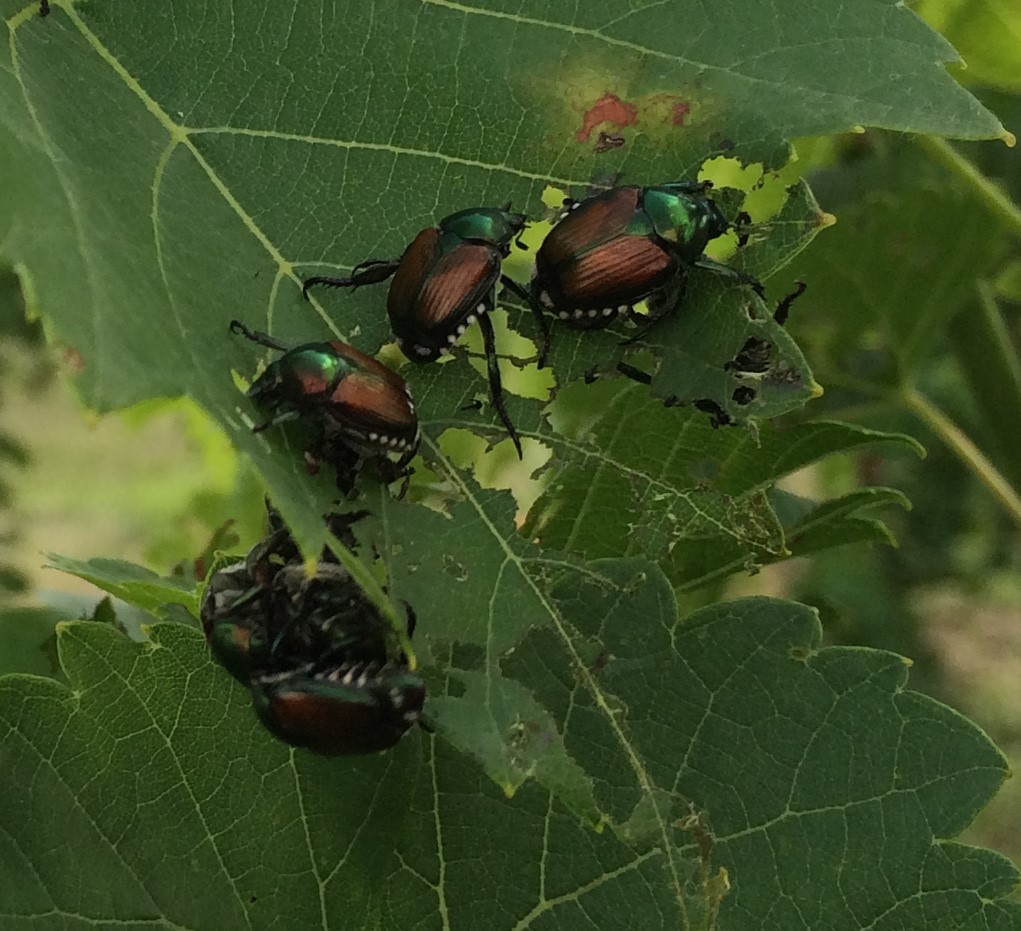
Japanese beetles are predictable and so expect them to emerge from soil between 970 to 1030 GDD (base 50). Typically this is near the calendar date of Father’s Day (June 16, 2019). Using the 30 year average of GDD, the predicted first emergence should occur between June 8 to 12. Start scouting for Japanese beetles in early June.
Be prepared and make sure to have insecticides on hand prior to when needed.
Early feeding is often on the border rows of grapevines, especially border rows that are near open grass areas.
Once Japanese beetles begin feeding the grapevines the grapevines release chemicals that attract more Japanese beetles. The beetles themselves do not have aggregation pheromones instead the grapevine wound response is what attracts more Japanese beetles.
Will treating the grass with insecticides to kill the Japanese beetle larvae reduce feeding damage to grapevines? At this time of year, most Japanese beetle larvae are at their last instar or beginning to pupate and therefore will not be susceptible to insecticides applied to grass areas. If treating grass areas the best time to treat these areas is the late summer and fall when the grubs are smaller and have yet to tunnel deeper into the soil. There is no research that I am aware of that clearly shows that treating the grass areas in a vineyard will reduce feeding damage by the adult Japanese beetles. Remember that adult Japanese beetles are very strong flyers and grapevines are a preferred host plant. Recommendation is to focus on controlling the adult Japanese beetles in vineyards.
Use indicator plant species found around your home, winery, or business as early indicators of the emergence of adult Japanese beetles. Some of favorite host plants of adult Japanese beetles are; Roses, American Linden, Fruit trees, including apple, apricot, cherry, peach and plum, and ornamental crabapple trees.
Pyrethroid insecticides are very effective in controlling adult Japanese beetles and pyrethroids also provide some repellency.
Some grape cultivars are preferred by adult Japanese beetles over other cultivars. The most susceptible are Vitis vinifera, followed by hybrids, and lastly, American Vitis labrusca.
Weather Forecast — Heavy Rains Predicted
More rains are very likely over the next five days. Predictive models suggest that some areas in Missouri could receive from 3 to 4 inches of rainfall. If your past fungicide cover spray is nearing the end of the protective cycle, consider taking advantage of dry weather to apply the next protective cover spray prior to predicted large rainfall amounts. Waiting until dry weather returns after the predicted rains may result in a couple of problems. First, the past cover spray if near the end of its protective cycle and prolonged wetting periods will likely result in infection periods for Phomopsis and black rot. Also with the rise in temperatures and tissue wetness, there is great potential for the development of downy mildew infections. Secondly, soils remain very saturated, and even small amounts of rainfall will make it difficult getting spray equipment through a vineyard. Think ahead and watch the weather.
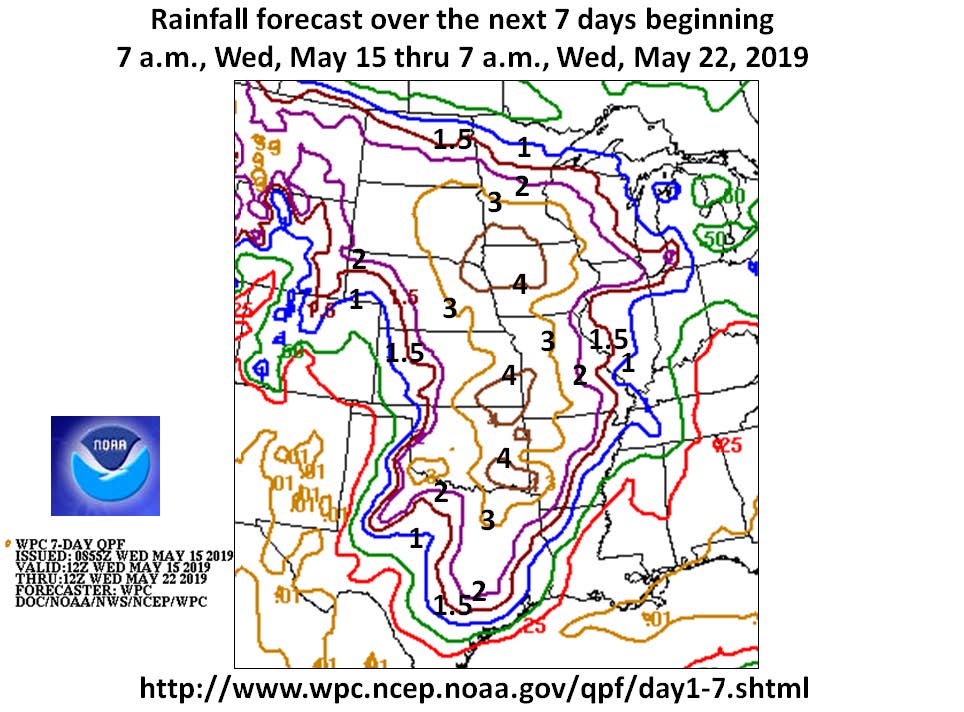
Image credit: Pat Guinan
Pestalotipsis
In general, Pestalotipsis spp have been classified as endophytes meaning that the fungus lives within the plant. At least in the case of Pestalotiopsis and grapevines the association does not appear to cause disease during part of the funguses life cycle. Here in Missouri over the past few years, we have learned that Pestalotiopis can cause leaf blight (Figure 1) and has caused fruit rot in Norton. My colleague Lucie Morton in Virginia has also demonstrated that Pestalotiopsis causes the berries to stall out during the ripening process and sugars simply do not rise within the berries. Lucie and I have shown that Captan and mancozeb can control the Pestolotiopsis in culture on potato dextrose agar. What remains unanswered is can Captan or mancozeb have any efficacy on Pestalotiopsis once inside the grape tissue. There are still a lot of unanswered questions, but we are making progress.
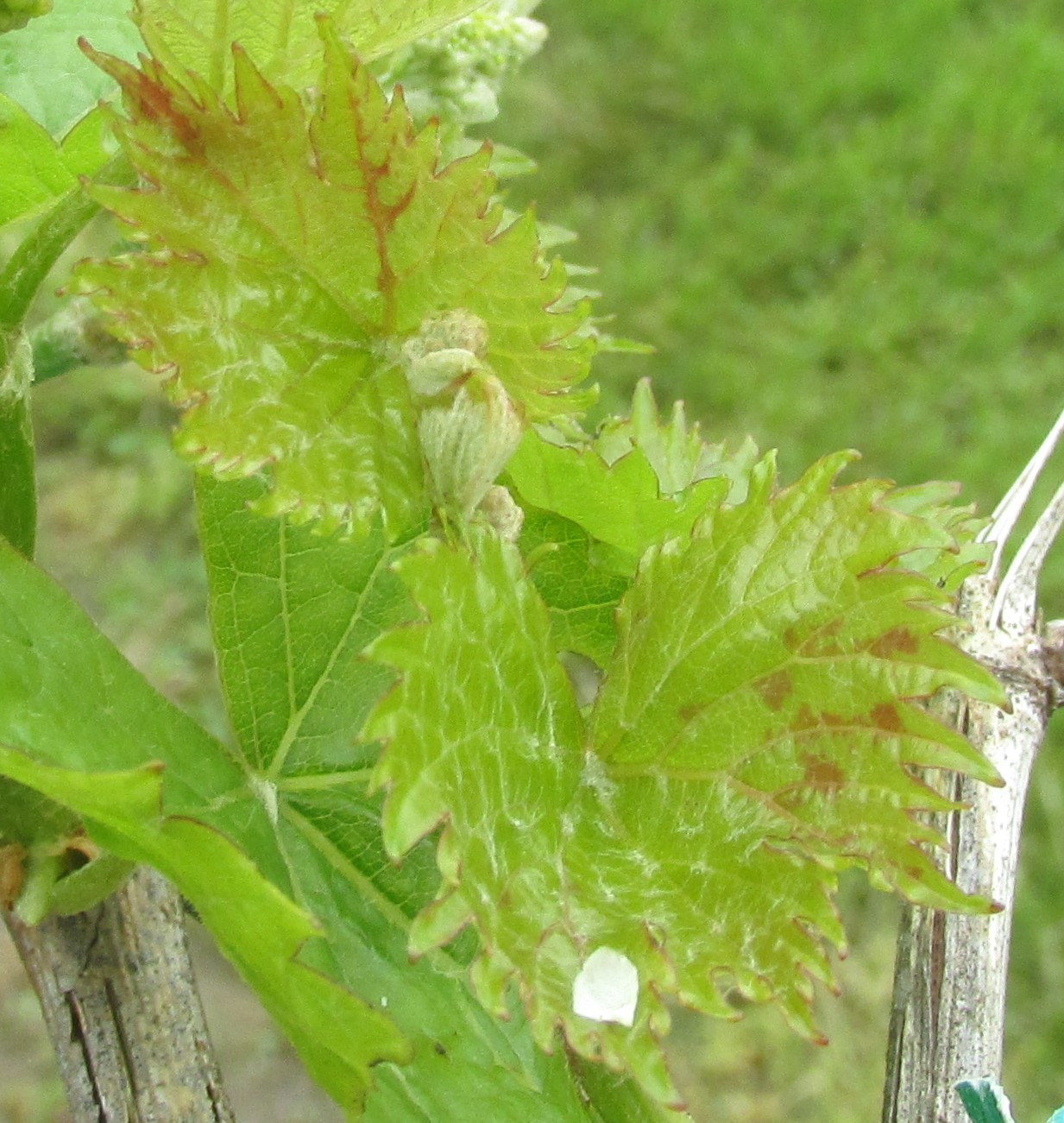
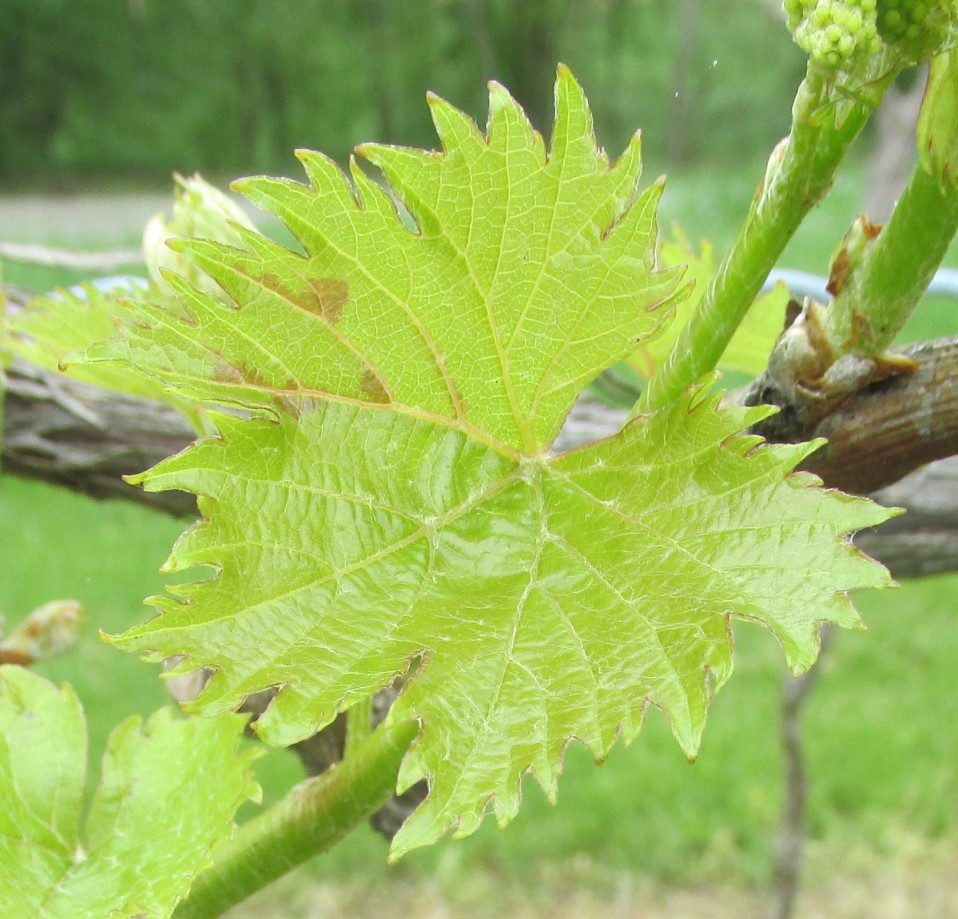
Photo credits: D. S. Volenberg
Phomopsis Viticola on Chambourcin on 17 May 2019, Boone County, Mo.
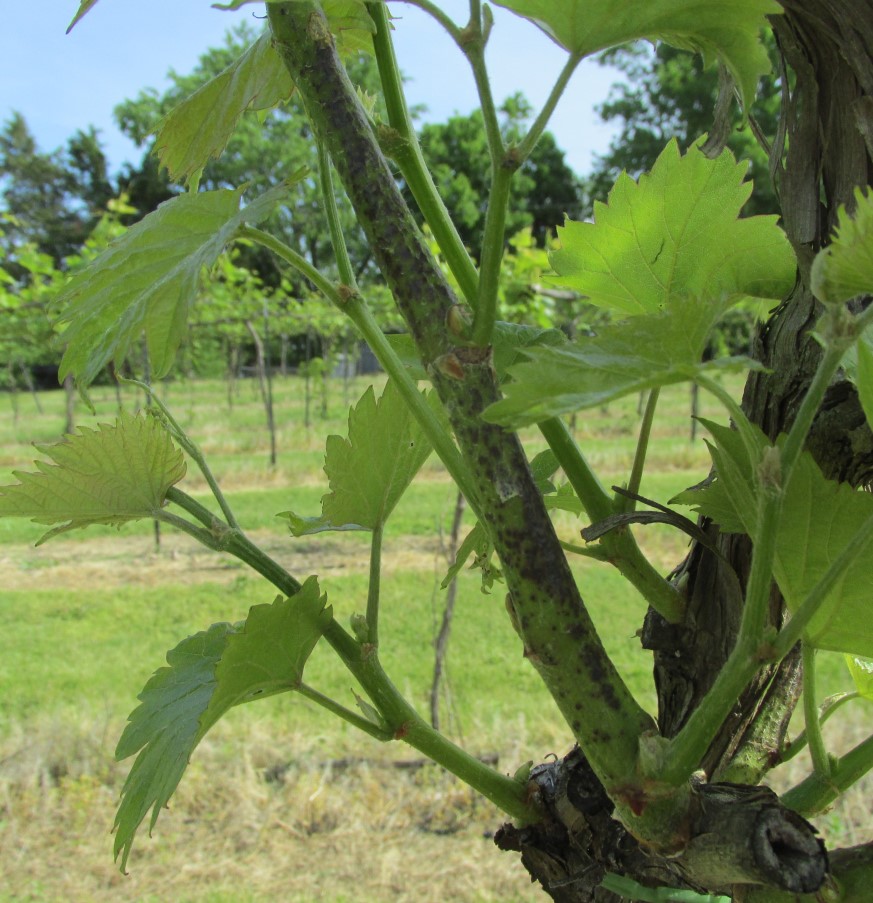

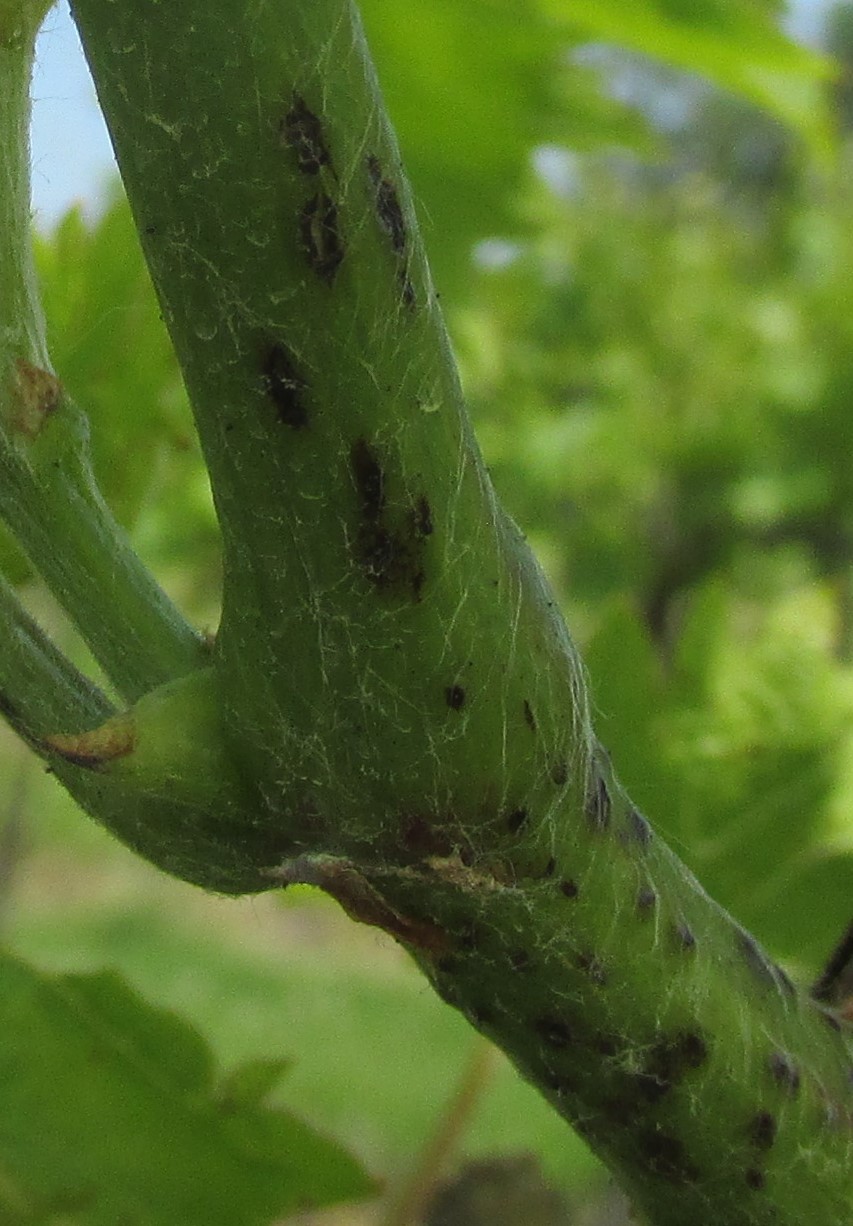

Photo credits: D. S. Volenberg
Cumulative Growing Degree Days for the Seven Grape Growing Regions of Missouri from April 1 to May 13, 2019
| Region | Location by County | Growing Degree Days1 | ||
|---|---|---|---|---|
| 2019 | 2018 | 30-year Average | ||
| Augusta | St. Charles | 419 | 425 | 463 |
| Hermann | Gasconade | 408 | 404 | 443 |
| Ozark Highland | Phelps | 458 | 462 | 469 |
| Ozark Mountain | Lawrence | 447 | 440 | 461 |
| Southeast | Ste. Genevieve | 442 | 427 | 474 |
| Central |
Boone | 387 | 431 | 424 |
| Western | Ray | 352 | 413 | 398 |
1 Growing degree days at base 50 from April 1 to May 13, 2019. Data compiled from Useful and Useable at https://mygeohub.org/groups/u2u/tools. Click on link below to determine growing degree days in your area.
To determine the number of growing degree days accumulated in your area since April 1, use this tool.